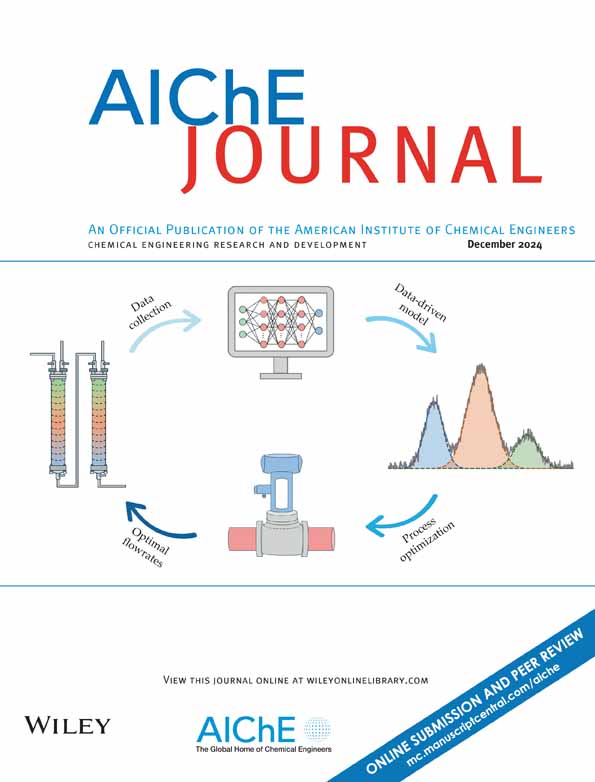表面活性剂对气泡聚并碰撞临界速度的影响
IF 3.5
3区 工程技术
Q2 ENGINEERING, CHEMICAL
引用次数: 0
摘要
气泡聚并临界碰撞速度的确定对于通过种群平衡模型预测气泡塔反应器内气泡尺寸分布具有重要意义。在这项研究中,表面活性剂负载系统的实验测量表明,即使是微量的表面活性剂也会显著降低临界速度。我们提出马鲁奇数——一个由马鲁奇膜排水模型导出的无量纲参数——作为量化表面活性剂效应的基本度量。该参数的正式定义是由马兰戈尼效应引起的膜排水阻力与毛细压力产生的驱动力之比。此外,我们通过建立临界韦伯数和马鲁奇数之间的定量关系,开发了一种新的临界速度相关性。这种相关性成功地预测了乙醇溶液中的临界速度,并显示了对其他系统(如丙醇溶液)的潜在适用性。本文章由计算机程序翻译,如有差异,请以英文原文为准。
Effects of surfactant on the critical velocity of bubble collisions for bubble coalescence
The determination of the critical collision velocity for bubble coalescence plays a crucial role in predicting bubble size distribution within bubble column reactors through population balance modeling. In this study, experimental measurements in surfactant–laden systems demonstrate that even trace amounts of surfactant significantly reduce the critical velocity. We propose the Marrucci number—a dimensionless parameter derived from the Marrucci film drainage model—as a fundamental metric for quantifying surfactant effects. This parameter is formally defined as the ratio between the film drainage resistance caused by the Marangoni effect and the driving force resulting from capillary pressure. Furthermore, we developed a novel correlation for critical velocity by establishing a quantitative relationship between the critical Weber number and the Marrucci number. This correlation successfully predicts critical velocities in ethanol solutions and shows potential applicability to other systems, such as propanol solutions.
求助全文
通过发布文献求助,成功后即可免费获取论文全文。
去求助
来源期刊

AIChE Journal
工程技术-工程:化工
CiteScore
7.10
自引率
10.80%
发文量
411
审稿时长
3.6 months
期刊介绍:
The AIChE Journal is the premier research monthly in chemical engineering and related fields. This peer-reviewed and broad-based journal reports on the most important and latest technological advances in core areas of chemical engineering as well as in other relevant engineering disciplines. To keep abreast with the progressive outlook of the profession, the Journal has been expanding the scope of its editorial contents to include such fast developing areas as biotechnology, electrochemical engineering, and environmental engineering.
The AIChE Journal is indeed the global communications vehicle for the world-renowned researchers to exchange top-notch research findings with one another. Subscribing to the AIChE Journal is like having immediate access to nine topical journals in the field.
Articles are categorized according to the following topical areas:
Biomolecular Engineering, Bioengineering, Biochemicals, Biofuels, and Food
Inorganic Materials: Synthesis and Processing
Particle Technology and Fluidization
Process Systems Engineering
Reaction Engineering, Kinetics and Catalysis
Separations: Materials, Devices and Processes
Soft Materials: Synthesis, Processing and Products
Thermodynamics and Molecular-Scale Phenomena
Transport Phenomena and Fluid Mechanics.
 求助内容:
求助内容: 应助结果提醒方式:
应助结果提醒方式:


